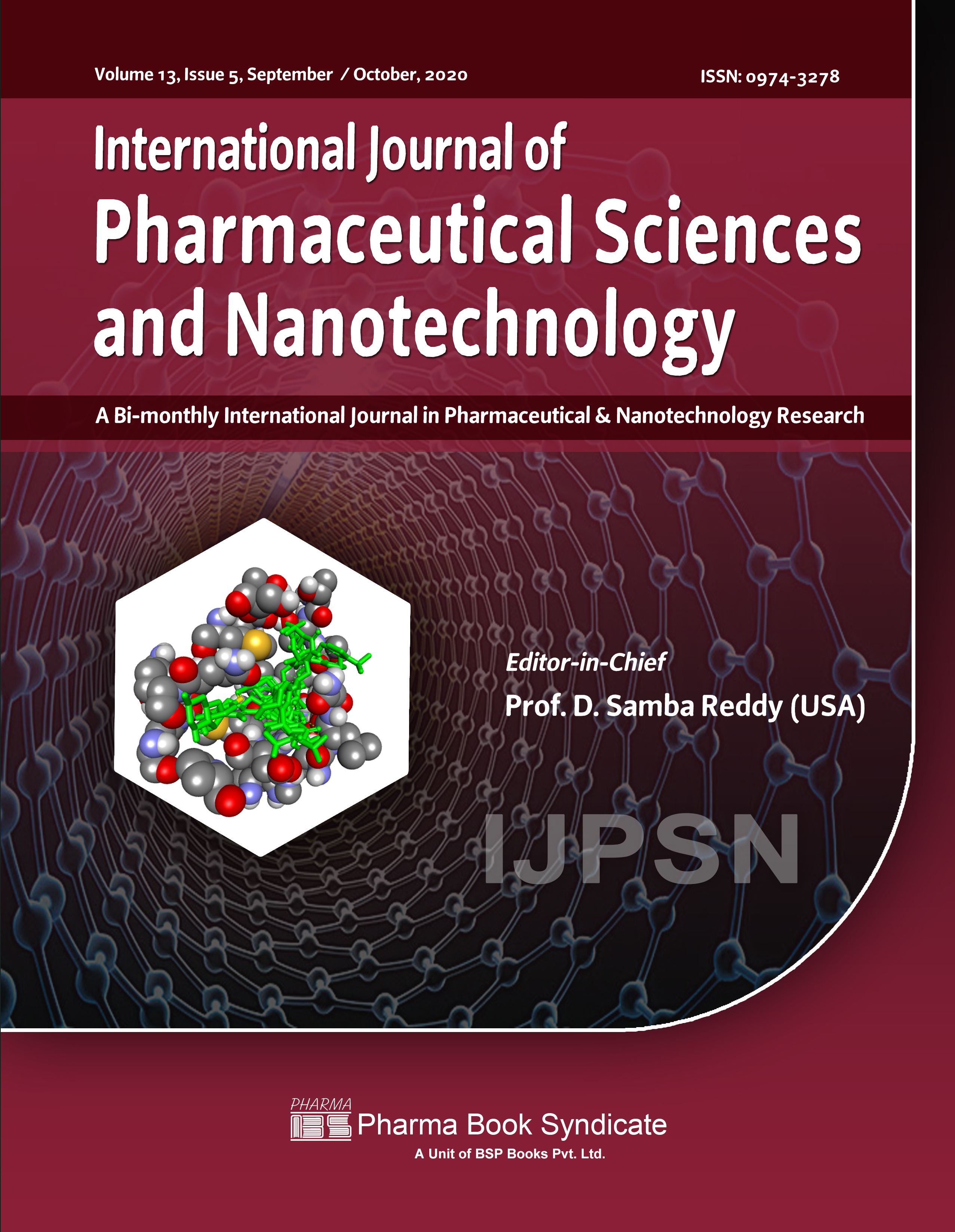GC-MS Analysis of Antibacterial Phytochemicals from Cassia sophera Linn
DOI:
https://doi.org/10.37285/ijpsn.2020.13.5.10Abstract
Cassia sophera Linn (Leguminosae) plants are widely distributed worldwide, and find immense applications in traditional systems of medicine in many countries. The plant has been partly explored by various research groups in the world. In our present study, two oils (OL-1 & OL-2) from aerial parts and roots of Cassia sophera have been evaluated by GC/MS using Perkin-Elmer Gas Chromatography–Mass Spectrometry and comparison of spectral data with the existing in National Institute of Standards and Technology (NIST) library. GC/MS analysis of the two oils revealed the presence of a number of chemical constituents. Again, the isolated oils exhibited considerable antibacterial activity against two Gram positive bacteria viz. Bacillus megaterium & Staphylococcus aureus and two Gram negative bacteria viz. Escherichia coli & Enterobacter aerogenes. Therefore, the present study will definitely inspire the researchers engaged in this direction to undertake further research work on this plant for searching new lead molecules
Downloads
Metrics
Keywords:
Cassia sophera, Caesalpiniaceae, Chemical Constituents, GC-MS Analysis, Antibacterial activityDownloads
Published
How to Cite
Issue
Section
References
Alemayehu G, Abegas B and Kraus W (1998). A 1,4-anthraquinone-dihydroanthracenone dimer from Senna sophera. Phytochemistry 48: 699-702.
Ambasta, SP (1956). The Useful Plants of India, PID-CSIR, New Delhi, India.
Aminabee SK and Lakshmana R (2012). A Plant Review of Cassia Sophera Linn. Int J Pharm Chem Biol Sci 2: 408-414.
Bauer AW, Kirby WMM, Sherris JC and Truck M (1966). Antibiotic susceptibility testing by a standardized single disk method. Am J Clin Pathol 4: 493-496.
Brahmachari G, Mandal B, Mandal M and Mondal A. (2019). Sopherone A and B: Two new biologically relevant dibenzo-α-pyrones from Cassia sophera. Fitoterapia 136: 104169.
Brahmachari G, Mandal NC, Jash SK, Roy R, Mandal LC, Mukherjee A, Behera B, Majhi S, Mondal A and Gangopadhyay A (2011). Evaluation of Antimicrobial Potentiality of Two flavonoids from Limnophila plants. Chem Biodivers 8: 1139-1151.
Brahmachari G, Mondal A, Mondal S, Modolo LV, de Fátima , Góis Ruiz ALT and de Carvalho JE (2017). 1,6-Dihydroxy-3-methyl-9,10-anthraquinone: An anti-cancerous natural pigment from Cassia sophera Linn. (Caesalpiniaceae). Indian J Chem (Sec. B) 56B: 1251-1255.
Chavan C, Nagore D, Todkar S, Bhagwat D and Singh K (2011). Pharmacognostical and preliminary phytochemical studies of Cassia sophera Linn. Int J Res Ayurveda & Pharmacy 2: 615-620.
Chopra RN, Nayar SL and Chopra IC (1956). Glossary of Indian Medicinal Plants, PID-CSIR, New Delhi, India.
Deshwal VK and Siddiqui MMM (2011). Screening and evaluation of anti-microbial activity in Tylophora indica and Cassia sophera. Biochem Cell Arch 11: 461-464.
Dolui A, Das S and Kharat A (2012). Antihyperglyceamic effect of Cassia sophera leaf extracts in rats with alloxan induced diabetes. Asian J Tradit Med 7: 8-13.
Jash SK, Gorai D and Gangopadhyay A (2014). Biosynthesis of silver nanoparticles from aqueous leaf extract of Synedrella nodiflora under sunlight irradiation and screening of its antibacterial activity. International Journal of Pharmaceutical Sciences and Nanotechnology 7: 2590-2596.
Kirtikar KR and Basu BD (1935). Indian Medicinal Plants, Leader Press, India, 1935, pp11.
Lakhmale S, Acharya R, Gorai D and Roy R (2017). Phytochemical analysis of Symphorema polyandrum Wight. seeds by GC-MS. Indo Am J Pharm Res 7: 8852-8862.
Malhotra S and Misra K (1982). A new anthraquinone from Cassia sophera heartwood. Planta Med 46: 247-249.
Mondal A, Karan SK, Singha T, Rajalingam D and Maity TK (2012). Evaluation of hepatoprotective effect of leaves of Cassia sophera linn. Evid. Based Complement Alternat, Med 2012: 436139.
Nadkarni AK (1976). Indian Materia Medica, Vol. I, 3rd edn, Popular Prakashan, Mumbai, India, pp 596.
Nagore DH, Ghosh VK and Patil MJ (2009). Evaluation of antiasthmatic activity of Cassia sophera linn. Pharmacog Magazine 5: 109-118.
Silva JGA, Silva AA, Coutinho ID, Pessoa CO, Cavalheiro AJ and Silva MGV (2016). Chemical profile and cytotoxic activity of leaf extracts from Senna spp. from Northeast of Brazil. J Braz Chem Soc 27:1872-1880.
Singh S and Singh S (2010). Preliminary Investigation of Cassia Sophera Linn Seed Mucilage in Tablet Formulations. Int J Pharm App Sci 1: 63-69.
Taur DJ and Patil RY (2011). Some medicinal plants with antiasthmatic potential: a current status. Asian Pac J Trop Biomed 1: 413-418.
Tiwari RD and Misra G (1975). Chemical examination of the flowers of Cassia sophera. Planta Med 28: 182-185.
Wankhade PW, Nagore DH, Kotagale NR, Turaskar AO and More SM (2011). Hepatoprotective effect of Cassia sophera leaves extract against paracetamol induce hepatic injury in rats. Int J Pharma BioSci 2: 433-438.
Zhao Y, Liu JP, Lu D and Li PY (2007). A novel cycloartane triterpene glycoside from the seeds of Cassia sophera L. Nat Prod Res 21: 494-499.






